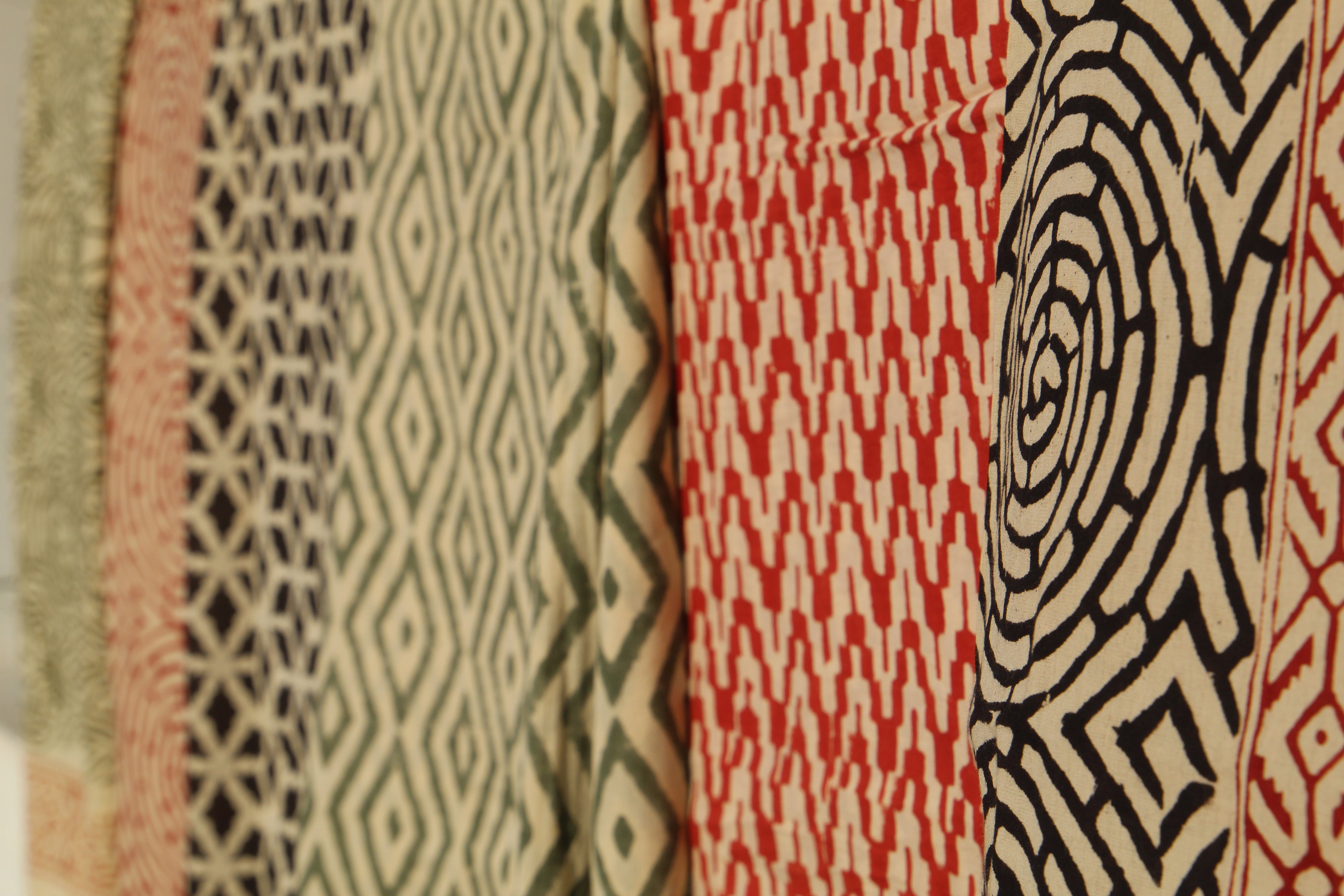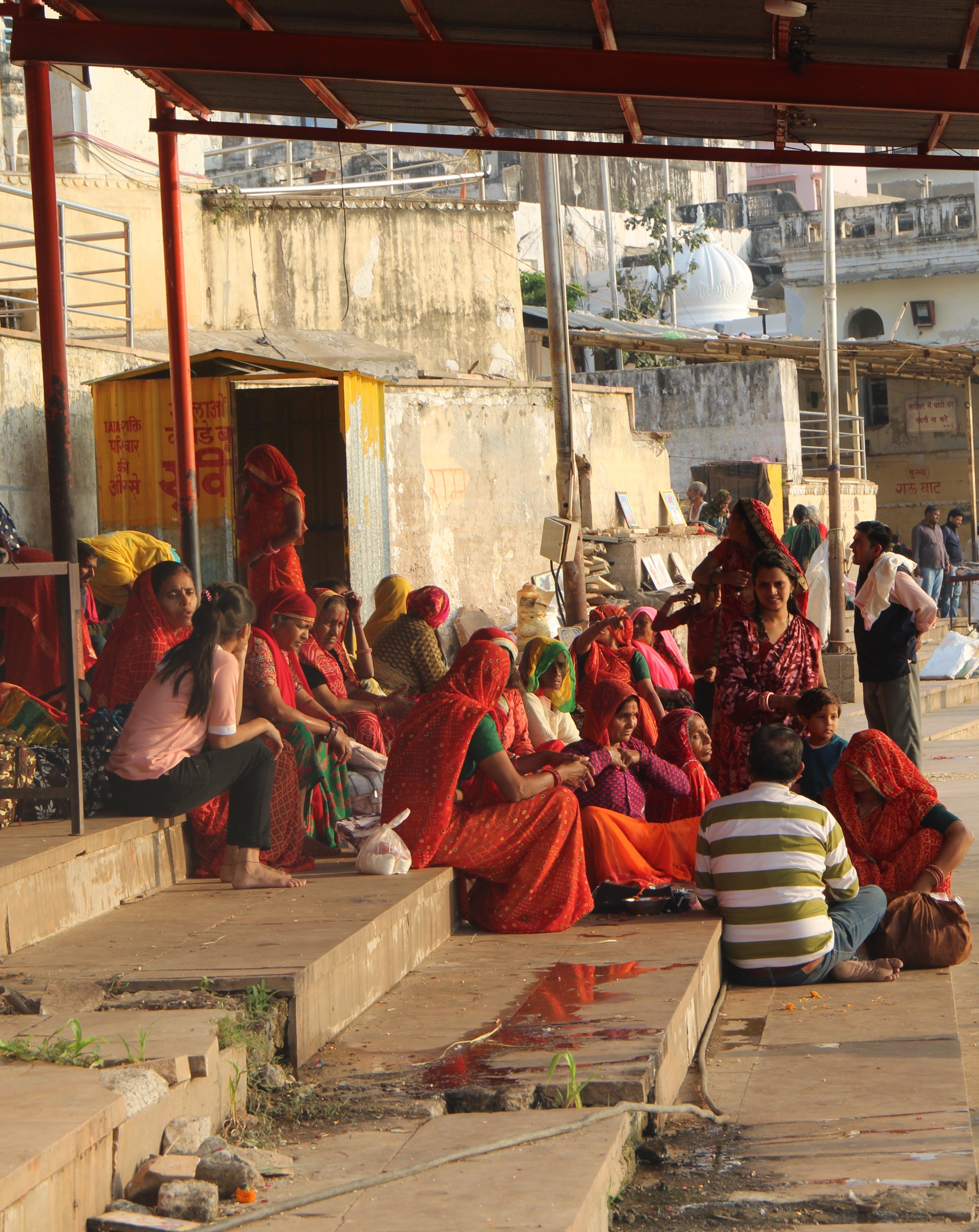Block printing is a centuries-old technique of fabric printing that originated in India, where it remains a cherished art form.
It celebrates the skill, patience, and artistry of the artisans who bring it to life.
Here’s a look at the different stages that make block printing an extraordinary process:
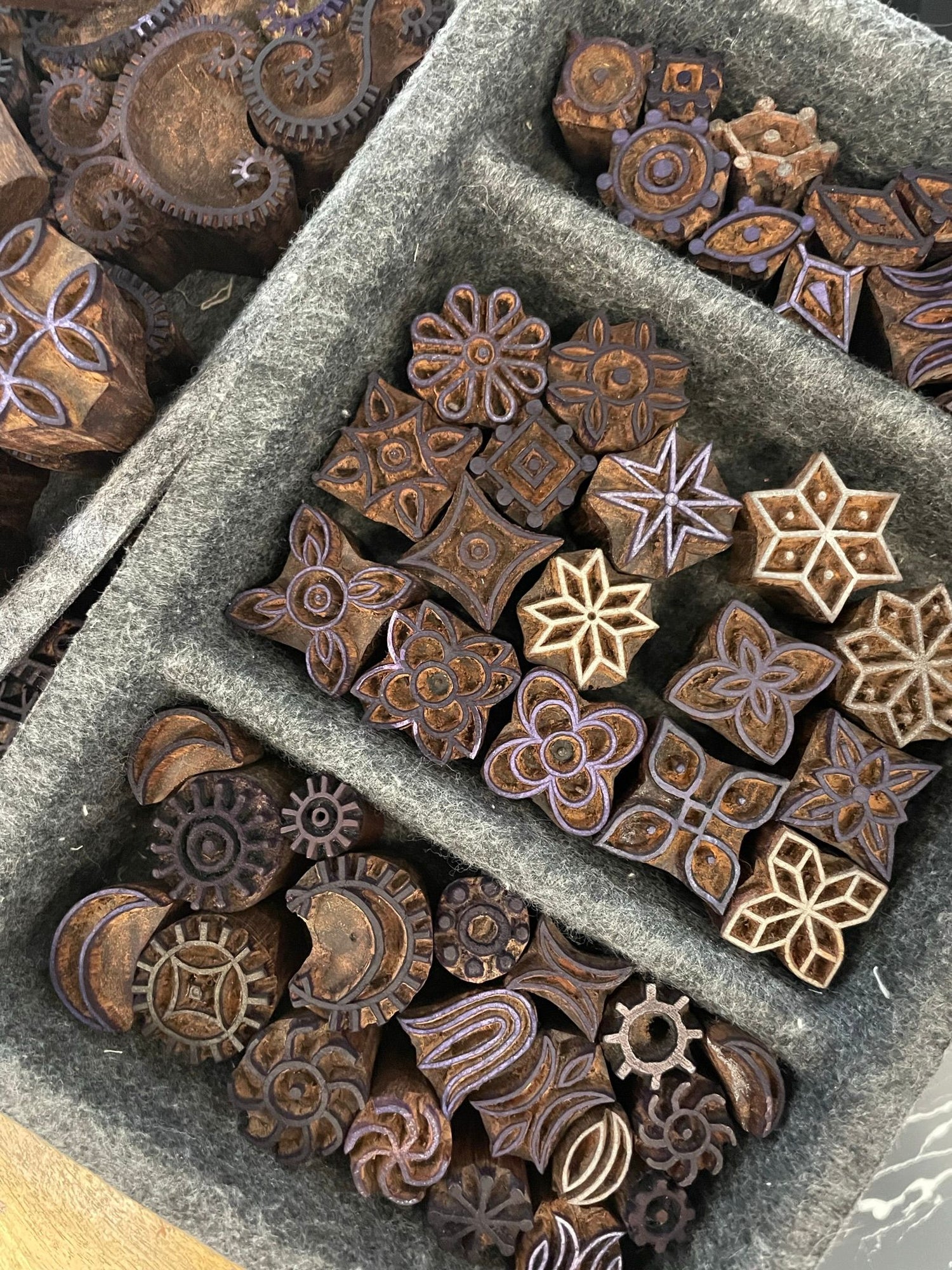
designing and carving the blocks
The first step begins with the design.
Master artisans carefully carve intricate designs into blocks of wood. Each color in a pattern requires its own block, making the carving process both meticulous and creative. These blocks, traditionally crafted from seasoned teak wood, can take days or even weeks to complete.
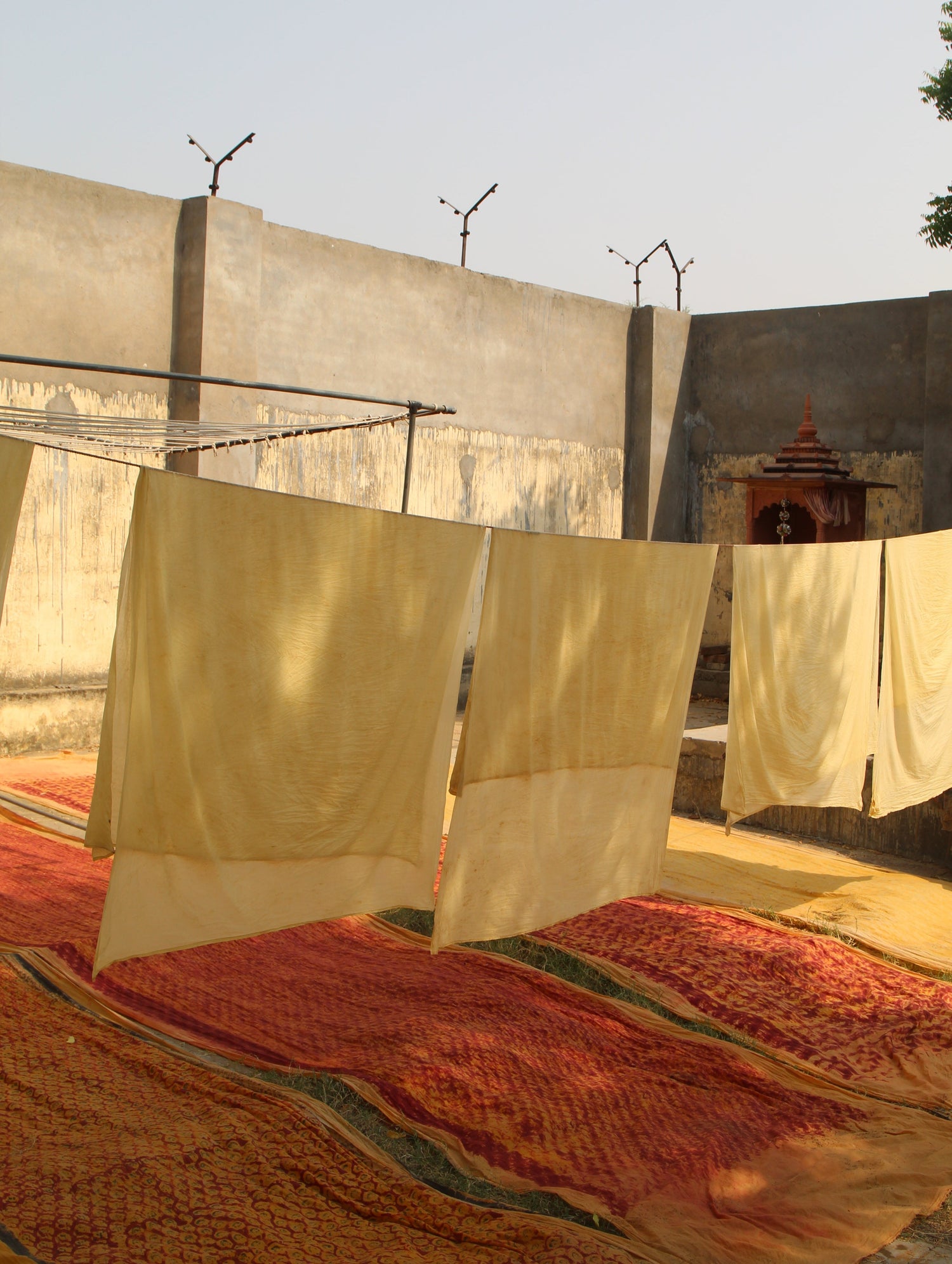
preparing the fabric
Next, the fabric is prepared to ensure it holds the color well and has a clean, smooth surface for printing. This involves washing the fabric to remove impurities, followed by sun-drying to achieve the perfect texture. Then, fabrics are treated with natural tannins or mordants to enhance color vibrancy and durability.
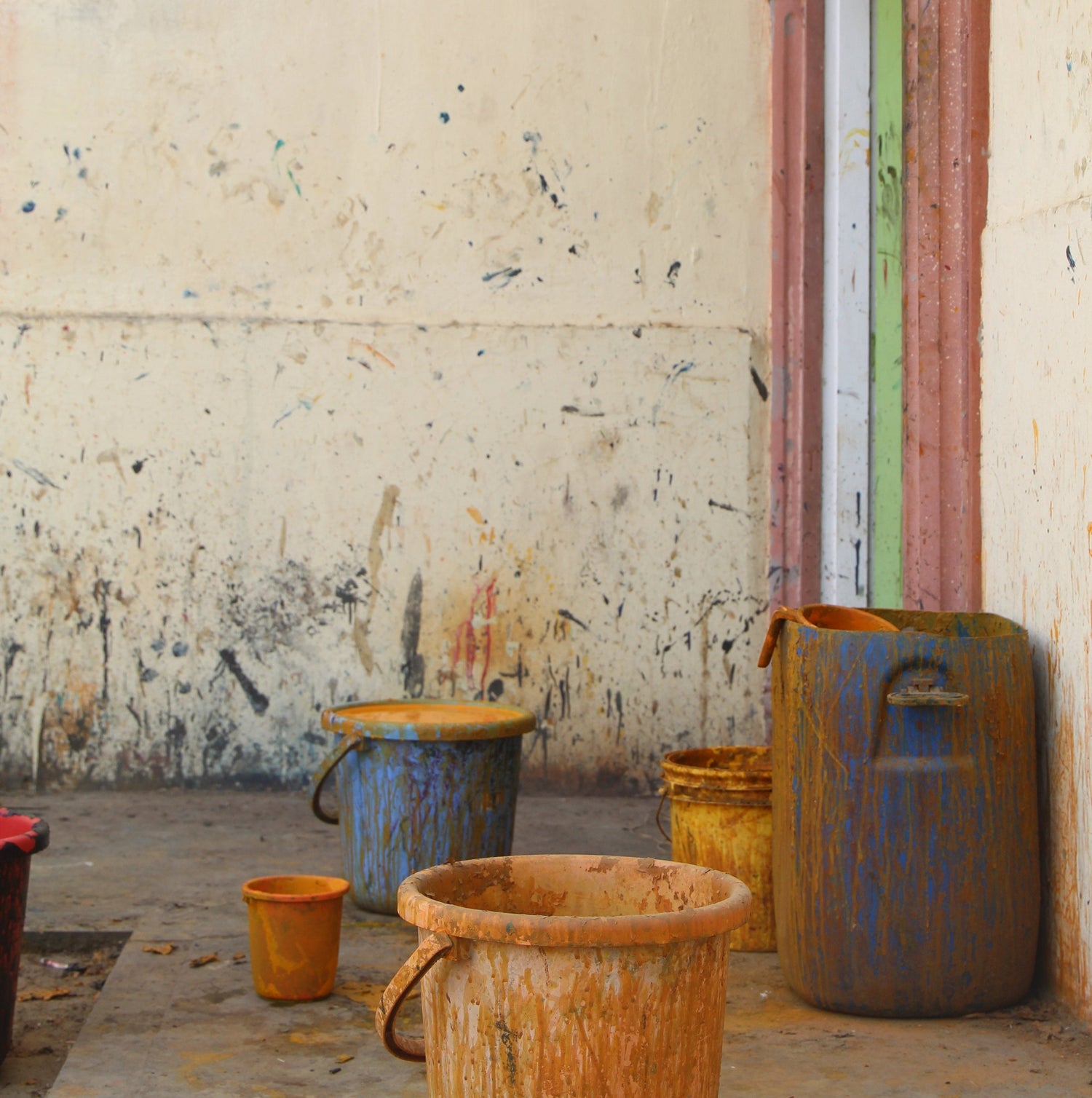
mixing natural dyes
We use natural dyes, which are derived from plants, minerals, and other earth-friendly sources. The pigments are carefully mixed to achieve just the right shades, taking into account how the colors will look once they’re applied and dried. The use of natural dyes requires experience and precision, as these colors interact uniquely with different fabrics.
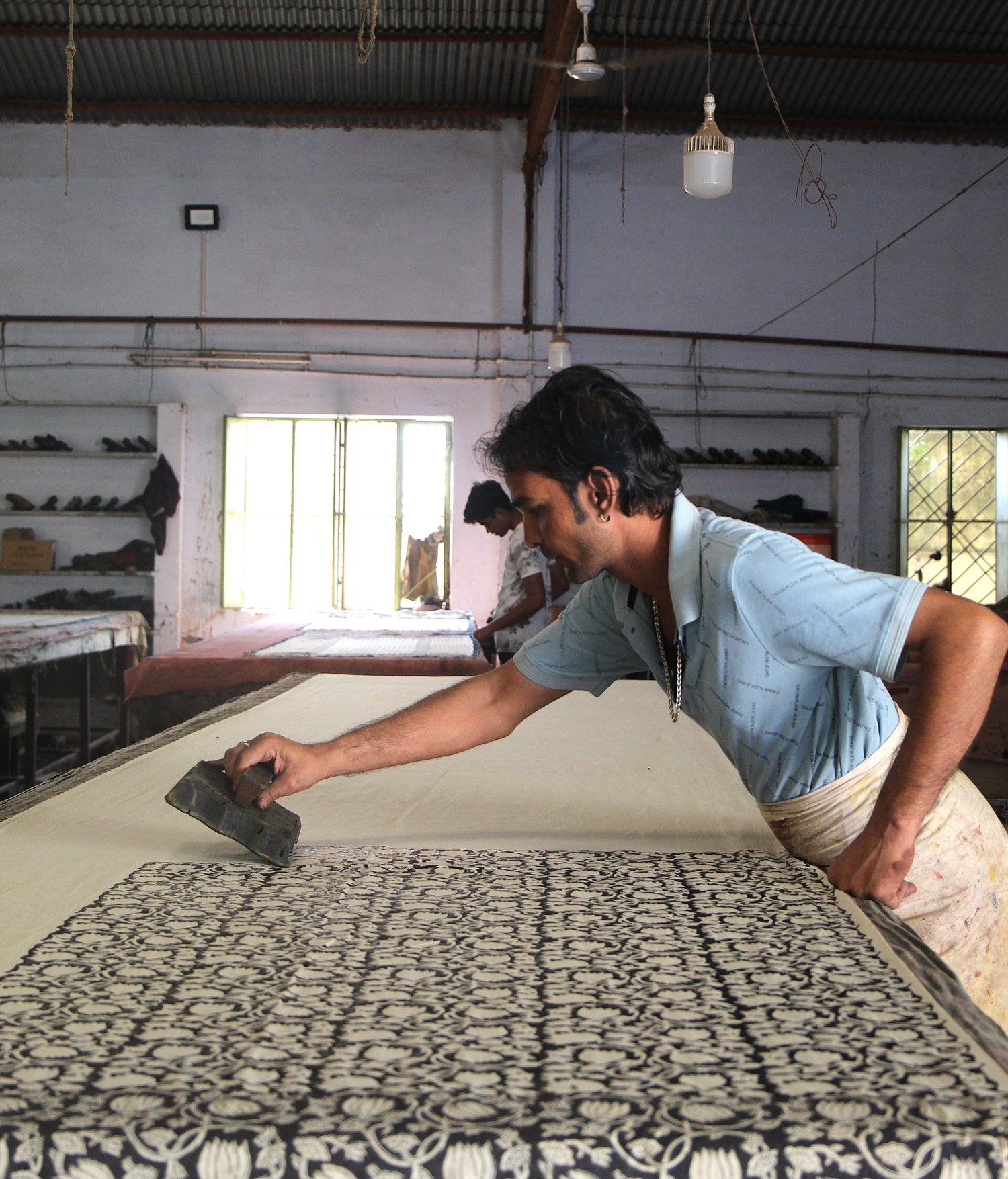
handprinting the fabric
The magic of block printing truly unfolds in this step. The artisans dip each block in dye and press it onto the fabric with skillful precision, ensuring even pressure and alignment with each print. This is done by hand, block by block, creating a rhythm as patterns emerge and layers of color build up. Each piece is unique, reflecting the hand-crafted nature of the process.

drying and setting the colors
Once the fabric has been printed, it’s carefully dried to allow the colors to set. After drying, the fabric is washed to remove any excess dye, ensuring a soft finish and lasting vibrancy.
After printing and drying, the fabric undergoes a final quality check. Any adjustments or touch-ups are done by hand to ensure the print remains perfect.
Now the fabric is ready to be transformed in your dress.

